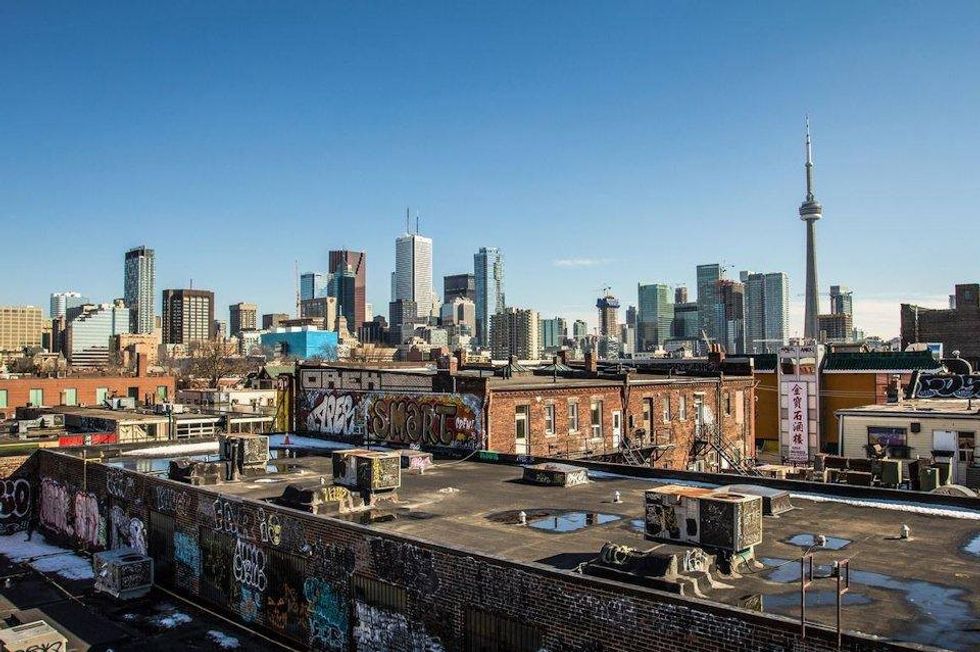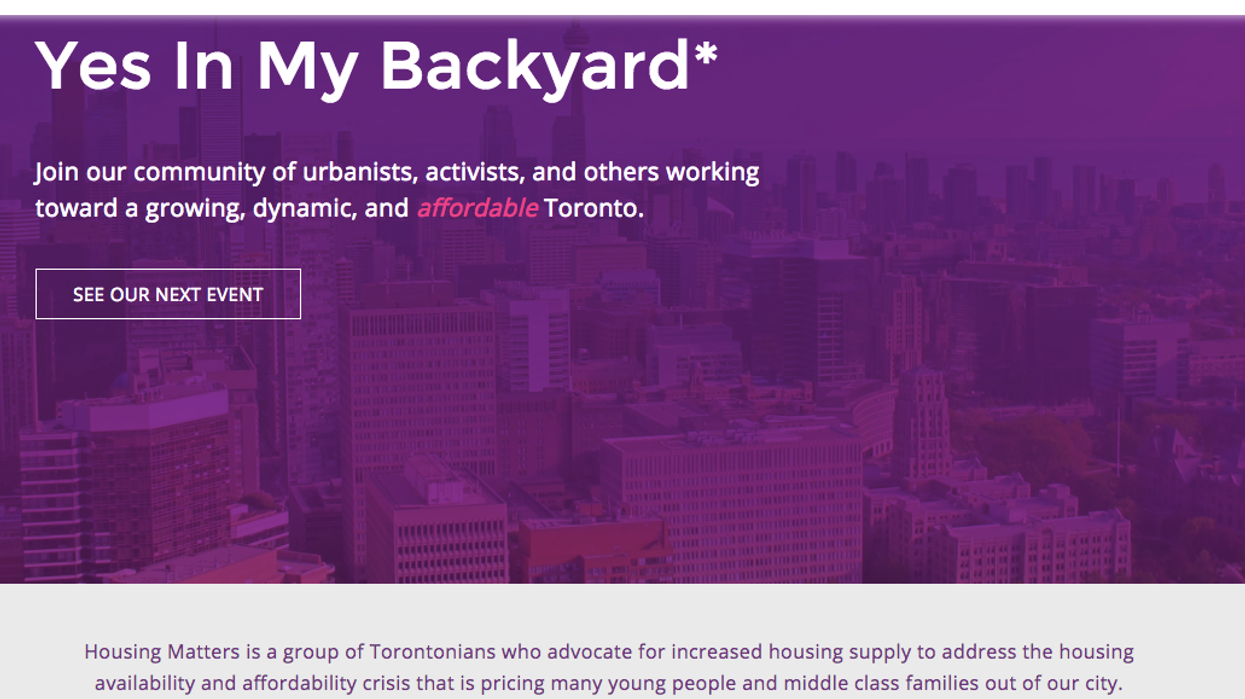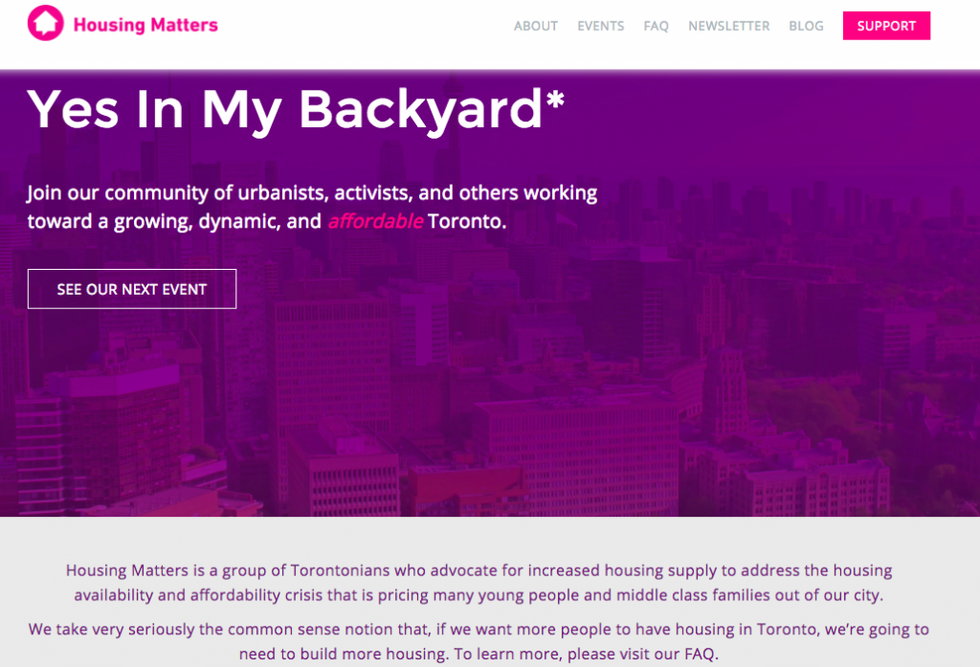
Anyone who has been looking to rent or buy a house in Toronto knows it is becoming increasingly difficult to do so.
Last year, rents increased by the most that they have in 15 years. Our rental vacancy rate, at 1.1%, is the lowest it's been in 16 years. Housing prices across all building types are now averaging over $700,000.
And with average rents for a one- and two-bedroom apartment sitting at $2,100 and $2,500 respectively, according to data collected by Padmapper, it’s clear Toronto is becoming increasingly unaffordable.
As a result, every year, countless young people and middle-class families move to the ‘burbs for a break — a chance to maybe balance their monthly budgets with no more than the recommended third of their income devoted to housing.
It’s an untenable situation — that is, if we care at all about diversity and inclusivity.
It doesn’t take much imagination to follow current trend lines and foresee a Toronto reserved for the rich, or lucky, or old.
A Manhattan of our own — just with more snow and significantly less density.
And while all three levels of government are beginning to forward policy responses to this problem, none have proposed any meaningful action that would address the primary culprit of rising housing prices: a lack of supply.
If we want more people to have housing in Toronto, we’re going to have to build more housing.
Unfortunately, it’s quite challenging to build enough new housing to accommodate our growing population and new household formation. It might even be impossible — which would explain our continued regional sprawl.
Land use rules codified in the City’s Official Plan and Zoning By-Laws are a big part of the problem. These rules have a central goal to preserve low-rise, low-density neighbourhoods.
While renters and aspiring homeowners continue to vie for ever-smaller shoebox-style condos in midtown or the downtown core, just over 60 per cent of Toronto’s residential land has been set aside for detached housing only.
In those neighbourhoods, designated in the Zoning By-Law map as “RD,” it is illegal to build a semi-detached house, duplex, or row of townhouses. These types of housing would be ideal to gently increase density and the supply of homes in transit-friendly neighbourhoods in our city.
And while most Torontonians support the need for new housing and increased urban density in general, some will routinely oppose specific local projects or building types. This is a trend known by the phrase “not in my backyard” or NIMBY.
When this occurs in multiple neighbourhoods throughout the city, it becomes very difficult to build new housing anywhere. There are policies that have identified parts of the city as being designated for growth and new development, but these are not nearly large enough to meet our needs.
And so, we find ourselves at the intersection of two secular trends: one toward urbanization (driven by those moving in), the other toward relative urban stagnation (driven by those who don’t want you to move in).
The consequences manifest as high prices, low vacancies, small units stacked high in small slivers of the city, and sprawl (with its associated traffic congestion and general environmental degradation).
To address this conundrum, in the spring of 2017, a group of Torontonians formed a YIMBY (Yes In My Backyard) group with a goal to organize and represent the constituency of people who would benefit from more homes in more neighbourhoods: Housing Matters.
To this day, Housing Matters has worked tirelessly to advance our pro-growth agenda. We advocate for increased housing supply for the benefit of market-rate affordability.
It’s worth repeating: If we want more people to have housing in Toronto, we’re going to need more housing.
Each week, we continue to add members and develop specific policy proposals to address the housing supply crisis. In time for the upcoming elections, we hope our base will have grown into a sizeable voting block, and we might then have an opportunity to meaningfully influence land use policy.
Our goal is to preserve Toronto as being a city for all, regardless of socioeconomic status.
In the meantime, we hope that you’ll join us in saying “yes” to new housing, even when that housing is in or near your backyard.






















